How to Grow Mushrooms from Spores: Your Journey to Home Cultivation
Learning how to grow mushrooms from spores opens up a fascinating world of fungal cultivation that allows you to propagate your favorite mushroom varieties from their most basic reproductive units. While growing mushrooms from spores requires more patience and skill than using pre-made growing kits like the Lykyn Smart Mushroom Grow Kit, this method provides unparalleled control over genetics, strain selection, and the complete cultivation process from start to finish.
Growing mushrooms from spores represents the most fundamental approach to mushroom cultivation, mimicking the natural reproductive cycle that fungi use in the wild. Unlike commercial cultivation methods that rely on pre-grown mycelium or prepared substrates, spore cultivation allows you to witness and control every stage of mushroom development, from the initial germination of microscopic spores to the final harvest of mature fruiting bodies.
The process of growing mushrooms from spores involves several distinct phases: spore collection or acquisition, sterile technique preparation, spore germination on nutrient media, mycelium development, substrate preparation and inoculation, colonization monitoring, and finally fruiting body formation. Each phase presents unique challenges and learning opportunities that deepen your understanding of fungal biology and cultivation principles.

Understanding Mushroom Spores and Their Biology
What Are Mushroom Spores?
Mushroom spores are the reproductive units of fungi, analogous to seeds in plants but with fundamentally different characteristics and requirements. These microscopic structures contain the genetic material necessary to produce new mushroom organisms, but unlike seeds, spores typically require specific environmental conditions and nutrients to germinate successfully.
Key characteristics of mushroom spores:
- Microscopic size requiring magnification for detailed observation
- Protective outer walls that resist environmental stresses
- Genetic material from two parent organisms (in most culinary mushrooms)
- Dormant state that can persist for extended periods under proper storage
- Species-specific germination requirements and characteristics
Spores differ significantly from mycelium, the vegetative growth form of mushrooms. While mycelium represents actively growing fungal tissue that can be transferred and propagated relatively easily, spores require germination and subsequent development phases before producing usable cultivation material.
The Mushroom Lifecycle
Understanding the complete mushroom lifecycle helps explain why growing from spores requires more time and patience compared to other cultivation methods.
Complete mushroom lifecycle stages:
- Spore release: Mature mushrooms release spores from gills, pores, or other structures
- Spore dispersal: Environmental factors spread spores to new locations
- Germination: Spores develop initial hyphal growth under suitable conditions
- Primary mycelium: Individual spores produce single-nucleus mycelium
- Dikaryotic mycelium: Compatible mycelia fuse to form dual-nucleus mycelium
- Substrate colonization: Dikaryotic mycelium spreads through nutrient sources
- Primordia formation: Environmental triggers initiate mushroom development
- Fruiting body maturation: Mushrooms develop and eventually release new spores
This complete cycle explains why spore cultivation requires several weeks to months compared to the immediate growth possible with established mycelium cultures.
Spore Viability and Storage
Proper spore handling and storage significantly impact cultivation success rates. Understanding spore viability factors helps ensure your cultivation efforts start with the highest quality genetic material.
Factors affecting spore viability:
- Temperature fluctuations that can damage cellular structures
- Moisture levels that may trigger premature germination or desiccation
- Light exposure that can degrade spore contents over time
- Contamination from bacteria, molds, or other microorganisms
- Age of spores, as viability decreases gradually over time
Essential Equipment and Materials for Spore Cultivation
Sterile Technique Equipment
Successful spore cultivation requires maintaining sterile conditions throughout the process to prevent contamination from competing microorganisms.
Essential sterile technique equipment:
- Pressure cooker or autoclave for sterilizing materials and substrates
- Laminar flow hood or still air box for creating clean working environment
- Alcohol lamp or gas burner for flame sterilization of tools
- 70% isopropyl alcohol for surface disinfection
- Disposable gloves, masks, and hair coverings
- Pre-sterilized petri dishes for agar cultivation
- Sterile syringes and needles for spore handling
- Parafilm or similar sealing material for securing containers
While professional laboratory equipment provides optimal results, many successful home cultivators create effective setups using adapted household items and careful technique.
Nutrient Media and Substrates
Spores require specific nutrients for germination and initial growth, typically provided through prepared agar media or liquid nutrient solutions.
Common nutrient media for spore cultivation:
- Potato dextrose agar (PDA) for general mushroom cultivation
- Malt extract agar (MEA) for enhanced mycelial growth
- Liquid culture media for rapid mycelium propagation
- Grain substrates for spawn production
- Sawdust or straw substrates for fruiting body production
The advanced liquid culture techniques used in commercial cultivation can be adapted for spore-based cultivation, providing efficient methods for scaling up from initial spore germination to large-scale production.
Environmental Control Equipment
Maintaining optimal environmental conditions throughout the cultivation process requires reliable monitoring and control equipment.
Environmental control essentials:
- Thermometer and hygrometer for temperature and humidity monitoring
- Heating mats or incubators for maintaining optimal temperatures
- Humidity control systems for fruiting environments
- Air filtration systems to prevent contamination
- Timer-controlled lighting for species requiring light triggers
The Lykyn Smart Mushroom Grow Kit demonstrates how advanced environmental controls can automate many of these functions, though spore cultivation typically requires more hands-on management during early stages.
Step-by-Step Spore Cultivation Process
Phase 1: Spore Collection and Preparation
The journey begins with obtaining viable spores through collection from fresh mushrooms or purchasing from reputable suppliers.
Spore collection from fresh mushrooms:
- Select mature mushrooms with fully opened caps and visible spore-bearing surfaces
- Remove stems and place caps gill-side or pore-side down on sterile paper
- Cover with clean containers to prevent air currents from disturbing spores
- Allow 12-24 hours for spore release, creating visible spore prints
- Carefully collect spores using sterile tools and store in appropriate containers
- Label samples with species, collection date, and source information
Spore syringe preparation:
- Sterilize distilled water and syringes using pressure cooking methods
- Scrape collected spores into sterile water using flame-sterilized tools
- Draw spore suspension into sterile syringes, avoiding air bubbles
- Store completed spore syringes in refrigerated conditions
- Test small samples on agar plates to verify viability before large-scale use
Phase 2: Agar Plate Inoculation
Transferring spores to nutrient agar provides controlled conditions for germination and initial mycelial development.
Agar inoculation procedure:
- Prepare sterile work environment using laminar flow hood or still air box
- Flame sterilize inoculation tools and allow to cool
- Open agar plates minimally to reduce contamination exposure
- Place small drops of spore suspension onto agar surface using sterile technique
- Seal plates with parafilm or appropriate sealing materials
- Label plates with species, date, and any relevant cultivation notes
- Incubate at species-appropriate temperatures (typically 68-75°F for most varieties)
Monitoring germination progress:
- Examine plates daily for signs of spore germination (typically 3-14 days)
- Look for thread-like hyphal growth extending from spore locations
- Document contamination issues and successful germination patterns
- Select strongest, cleanest growth areas for subsequent transfers
Phase 3: Mycelium Isolation and Propagation
Once spores germinate and produce visible mycelium, isolation and propagation steps prepare cultures for substrate inoculation.
Tissue isolation process:
- Identify areas of pure, vigorous mycelial growth on agar plates
- Use flame-sterilized scalpels to cut small sections of clean mycelium
- Transfer mycelial sections to fresh agar plates using sterile technique
- Repeat isolation transfers until pure cultures are achieved
- Maintain multiple backup cultures to prevent loss from contamination
Scaling up through liquid culture: The liquid culture propagation methods provide efficient ways to multiply mycelium from small agar cultures into larger quantities suitable for substrate inoculation. This approach significantly accelerates the timeline from spore germination to production-scale cultivation.
Phase 4: Substrate Preparation and Inoculation
Converting isolated mycelium into substrate-colonizing spawn prepares for the final fruiting phase.
Grain spawn preparation:
- Prepare grain substrates (wheat, millet, or rye) through cooking and sterilization
- Cool sterile grains to room temperature in clean environment
- Inoculate grains with liquid culture or agar transfers using sterile technique
- Mix inoculated grains thoroughly to distribute mycelium evenly
- Store inoculated grains in breathable containers at optimal temperatures
- Monitor colonization progress over 2-4 weeks until fully colonized
Final substrate inoculation:
- Prepare final growing substrates (sawdust, straw, or specialized mixes)
- Sterilize substrates using pressure cooking or pasteurization methods
- Cool substrates and inoculate with colonized grain spawn
- Package inoculated substrates in appropriate containers with gas exchange
- Maintain colonization conditions until substrates are fully colonized
Environmental Requirements for Each Growth Phase
Germination Phase Conditions
Spore germination requires specific environmental conditions that differ from later cultivation phases.
Optimal germination conditions:
- Temperature: 68-75°F (20-24°C) for most common species
- Humidity: High humidity maintained through sealed containers
- Light: Minimal light exposure during initial germination
- Air circulation: Limited air movement to prevent contamination
- pH levels: Slightly acidic conditions (5.5-6.5) for most species
Mycelial Growth Phase Requirements
Once germination occurs, mycelial development requires sustained optimal conditions for vigorous growth.
Mycelial growth optimization:
- Consistent temperature maintenance within species-specific ranges
- Adequate moisture without waterlogged conditions
- Appropriate nutrition through quality agar or liquid media
- Clean environment preventing competitive microorganisms
- Proper gas exchange allowing respiration while maintaining humidity
Fruiting Phase Environmental Controls
The transition from vegetative growth to fruiting body development requires environmental changes that trigger mushroom formation.
Fruiting triggers and conditions:
- Temperature shifts that signal seasonal changes
- Humidity increases to support mushroom development
- Light exposure appropriate to species requirements
- Fresh air exchange to remove CO2 buildup
- Physical disturbances that simulate natural environmental stresses
The Lykyn Smart Mushroom Grow Kit automates many of these environmental controls, maintaining optimal conditions for fruiting while you focus on perfecting earlier cultivation phases.
Common Challenges and Troubleshooting
Contamination Prevention and Management
Contamination represents the most significant challenge in spore cultivation, requiring vigilant prevention and rapid response protocols.
Common contamination sources:
- Airborne bacteria and mold spores in cultivation environment
- Non-sterile tools, containers, or work surfaces
- Contaminated water or nutrient media
- Poor sterile technique during transfers and inoculations
- Compromised storage conditions allowing contamination growth
Contamination identification:
- Green, black, or colored growths indicating mold contamination
- Slimy, wet appearances suggesting bacterial contamination
- Off-odors from cultures indicating microbial issues
- Rapid growth patterns unlike normal mycelial development
- Color changes in media or substrates indicating pH shifts
Slow or Failed Germination
Some spores may fail to germinate or show extremely slow development, requiring troubleshooting and patience.
Addressing germination issues:
- Verify spore viability through microscopic examination
- Adjust incubation temperatures within species-appropriate ranges
- Check nutrient media quality and preparation methods
- Ensure adequate moisture without oversaturation
- Consider genetic factors that may affect germination rates
Poor Mycelial Growth
Even successfully germinated spores may produce weak or slow-growing mycelium requiring intervention.
Improving mycelial vigor:
- Optimize nutrition through improved media formulations
- Maintain consistent environmental conditions
- Ensure adequate but not excessive moisture levels
- Provide appropriate gas exchange for healthy respiration
- Select vigorous growth sectors for propagation
Advanced Techniques for Spore Cultivation
Strain Selection and Improvement
Working with spores allows selection and development of superior strains with desirable characteristics.
Strain selection criteria:
- Growth vigor and colonization speed
- Resistance to common contamination issues
- Fruiting body quality and yield potential
- Adaptation to local environmental conditions
- Specific characteristics like flavor, texture, or medicinal properties
Multi-Spore vs. Single-Spore Isolation
Understanding the differences between multi-spore and single-spore cultivation helps optimize genetic outcomes.
Multi-spore cultivation advantages:
- Simpler technique requiring less specialized equipment
- Genetic diversity that may improve adaptability
- Faster initial progress due to multiple germination points
- More forgiving of minor technique errors
Single-spore isolation benefits:
- Precise genetic control for breeding programs
- Consistent characteristics across cultivation cycles
- Ability to develop specialized strains for specific applications
- Scientific reproducibility for research purposes
Preservation and Banking Methods
Successful spore cultivation benefits from proper culture preservation for long-term use and backup security.
Culture preservation techniques:
- Agar slant storage in refrigerated conditions
- Liquid nitrogen preservation for long-term banking
- Spore print storage as genetic backup material
- Glycerol stock preparation for extended storage
- Regular culture transfer schedules to maintain viability

Scaling from Spores to Production
Timeline Expectations
Understanding realistic timelines helps set appropriate expectations for spore-based cultivation projects.
Typical cultivation timeline:
- Spore germination: 3-14 days depending on species
- Initial mycelial development: 2-4 weeks
- Culture isolation and cleaning: 2-6 weeks
- Spawn production: 3-6 weeks
- Substrate colonization: 2-8 weeks
- Fruiting body development: 1-4 weeks
- Total timeline: 3-6 months from spores to harvest
Production Planning
Successful scaling requires careful planning and resource allocation throughout the extended cultivation timeline.
Production planning considerations:
- Equipment capacity and expansion requirements
- Substrate and nutrition supply chains
- Quality control procedures for each production phase
- Labor requirements for maintaining multiple cultivation phases
- Market timing and sales planning for harvest periods
Integration with Modern Growing Systems
Combining Traditional and Modern Methods
While spore cultivation follows traditional mycological principles, modern equipment can improve success rates and efficiency.
Modern equipment applications:
- Environmental monitoring systems for precise condition control
- Automated humidity and temperature management
- Air filtration systems for contamination prevention
- Data logging for optimization and troubleshooting
- Sterile workspace improvements through technology
The Lykyn Smart Mushroom Grow Kit represents how modern technology can support traditional cultivation methods, providing automated environmental control that allows cultivators to focus on perfecting sterile technique and culture management.
Building Complete Cultivation Systems
Successful spore cultivation often evolves into comprehensive growing operations incorporating multiple cultivation methods.
System integration approaches:
- Spore cultivation for genetic preservation and new variety development
- Liquid culture propagation for efficient scaling
- Automated growing chambers for consistent fruiting conditions
- Quality control procedures ensuring food safety and consistency
- Documentation systems tracking genetics and performance data
Economic Considerations and ROI
Cost Analysis of Spore Cultivation
While spore cultivation requires higher initial investment in equipment and time, long-term economics can be favorable.
Initial investment considerations:
- Sterile technique equipment and workspace setup
- Environmental control systems for optimal growing conditions
- Substrate and nutrition supplies for extended cultivation cycles
- Quality control equipment for monitoring and testing
- Time investment for learning and perfecting techniques
Long-term Economic Benefits
Successful spore cultivation provides several economic advantages over purchasing prepared cultivation materials.
Economic benefits include:
- Unlimited genetic material from successful cultures
- Independence from commercial spawn suppliers
- Ability to develop specialized varieties for niche markets
- Potential for commercial culture sales to other cultivators
- Research and development capabilities for new varieties
Safety and Best Practices
Laboratory Safety Protocols
Spore cultivation involves working with microorganisms and potentially hazardous chemicals requiring appropriate safety measures.
Essential safety protocols:
- Proper ventilation in work areas to prevent exposure to spores
- Personal protective equipment including gloves, masks, and eye protection
- Safe handling and disposal of contaminated materials
- Chemical safety procedures for cleaning and sterilization agents
- Emergency procedures for exposure or contamination incidents
Food Safety Considerations
When cultivation progresses to edible mushroom production, food safety protocols become essential.
Food safety requirements:
- Proper identification verification before consumption
- Contamination prevention throughout cultivation process
- Appropriate storage and handling of harvested mushrooms
- Documentation of cultivation practices for traceability
- Understanding of local regulations regarding mushroom cultivation
Building Your Spore Cultivation Skills
Learning Resources and Community
Developing expertise in spore cultivation benefits from connecting with experienced practitioners and quality educational resources.
Recommended learning approaches:
- Local mycological societies and cultivation groups
- Online forums and communities focused on mushroom cultivation
- Scientific literature and research publications
- Workshops and courses offered by experienced cultivators
- Mentorship relationships with successful practitioners
Progressive Skill Development
Building spore cultivation expertise requires systematic skill development across multiple technical areas.
Skill development progression:
- Master basic sterile technique before attempting complex procedures
- Start with easier species before progressing to challenging varieties
- Develop troubleshooting skills through experience with common problems
- Build knowledge of mushroom biology and ecology
- Expand into specialized techniques like strain development and breeding

Conclusion: Mastering the Art of Spore Cultivation
Learning how to grow mushrooms from spores represents one of the most rewarding and educational approaches to fungal cultivation. While the process requires patience, attention to detail, and commitment to learning proper techniques, successful spore cultivation provides unparalleled control over genetics, strain selection, and the complete cultivation process.
The journey from microscopic spores to mature mushrooms offers deep insights into fungal biology while developing valuable practical skills in sterile technique, environmental control, and biological systems management. Whether your goals include developing new varieties, achieving cultivation independence, or simply understanding mushrooms at the most fundamental level, spore cultivation provides the foundation for advanced mycological pursuits.
Modern growing systems like the Lykyn Smart Mushroom Grow Kit complement traditional spore cultivation by providing reliable environmental control during critical fruiting phases, allowing you to focus on perfecting earlier cultivation stages. This combination of traditional knowledge and modern technology represents the future of home mushroom cultivation.
As you develop your spore cultivation skills, remember that every expert began with their first spore germination. The advanced techniques and growing methods available through modern resources make this ancient practice more accessible than ever before.
The investment in learning spore cultivation pays dividends in increased understanding, cultivation independence, and the deep satisfaction of growing mushrooms from their most basic reproductive units. Whether you're growing for personal enjoyment, research purposes, or commercial applications, mastering spore cultivation opens up endless possibilities in the fascinating world of fungal cultivation.

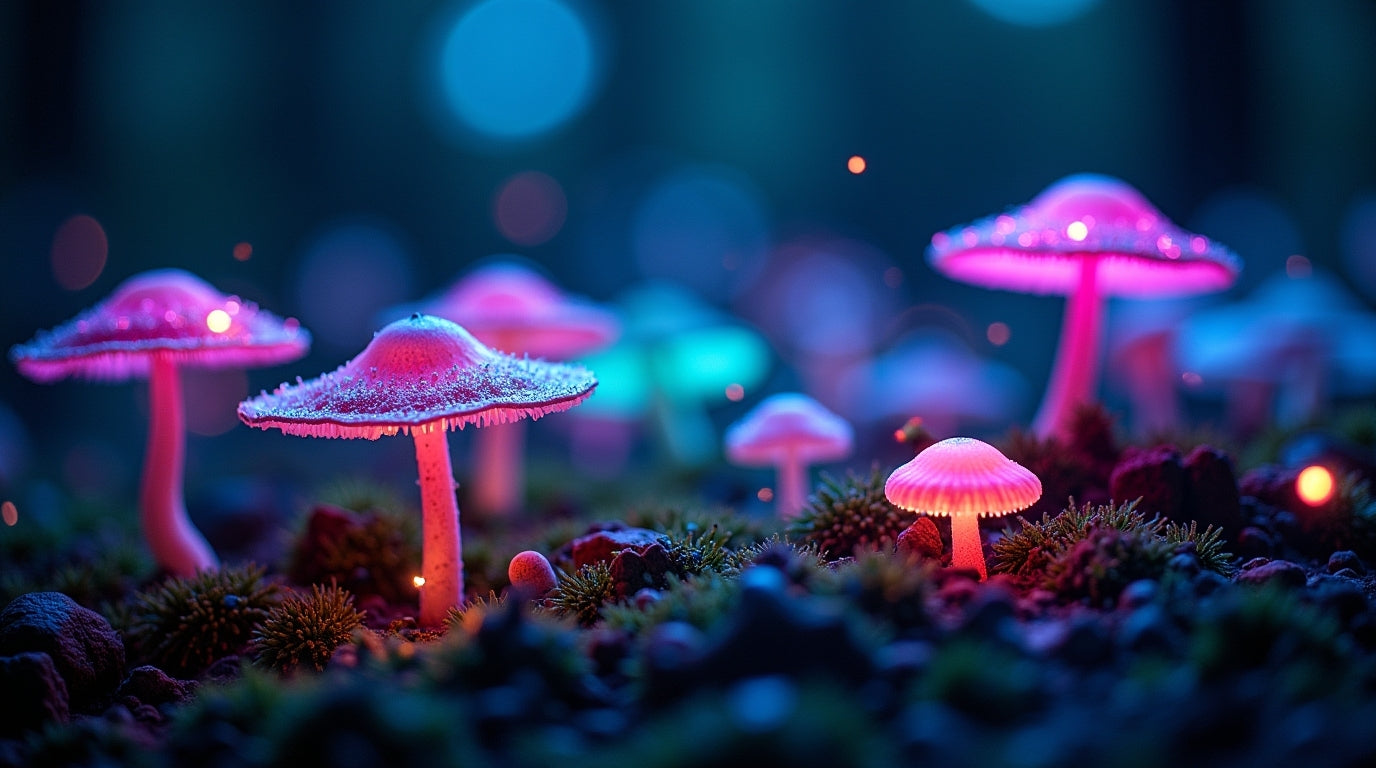


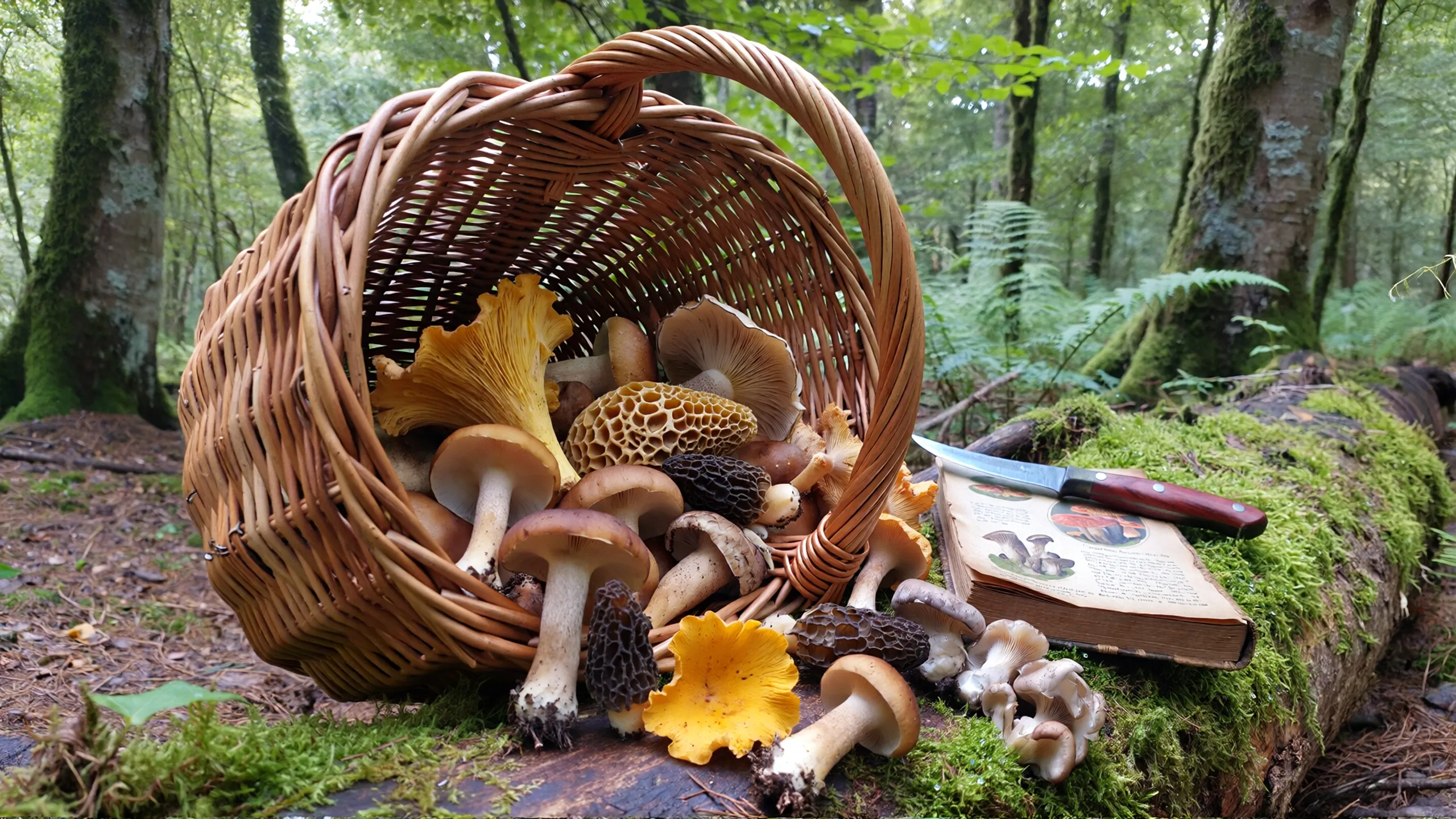

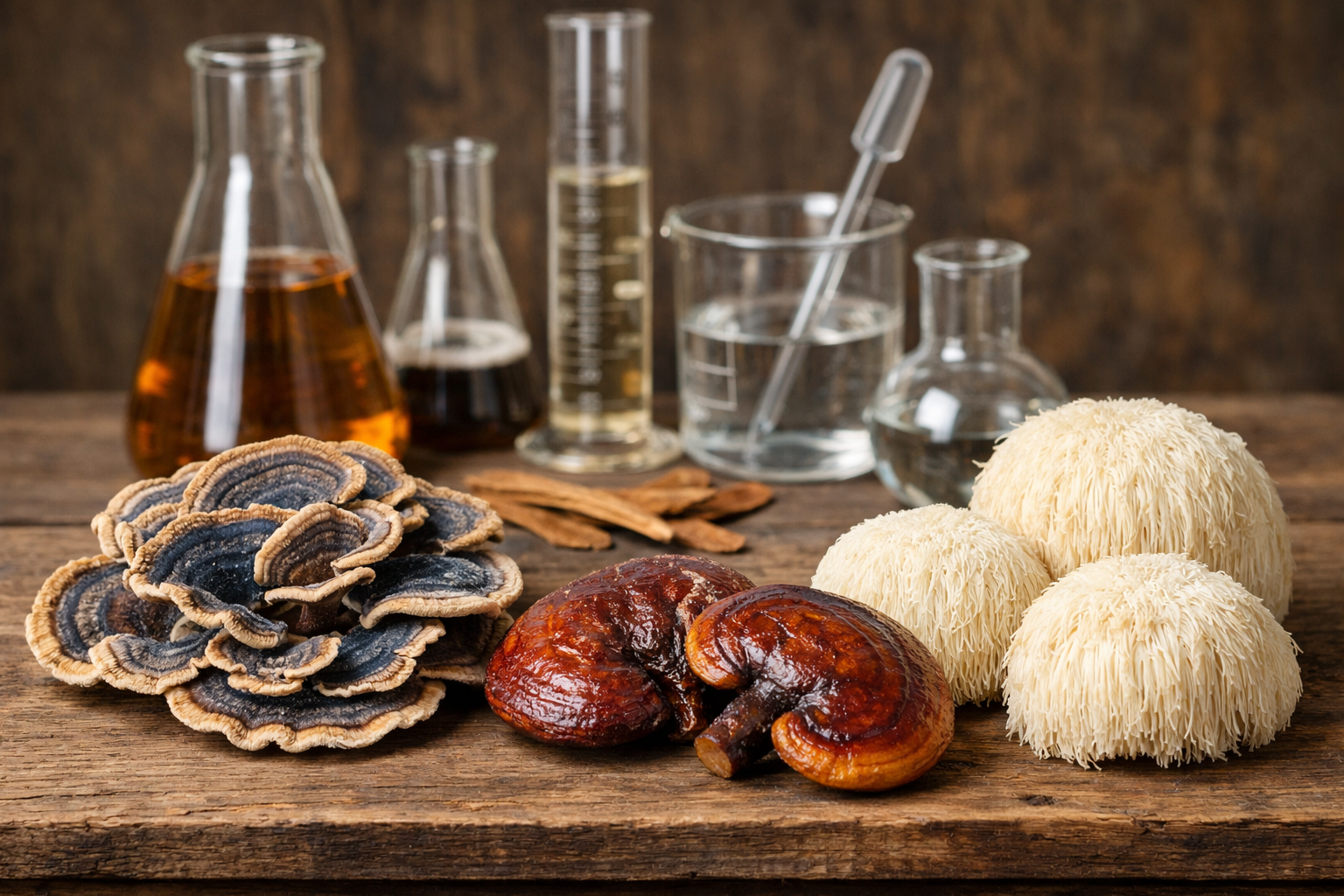
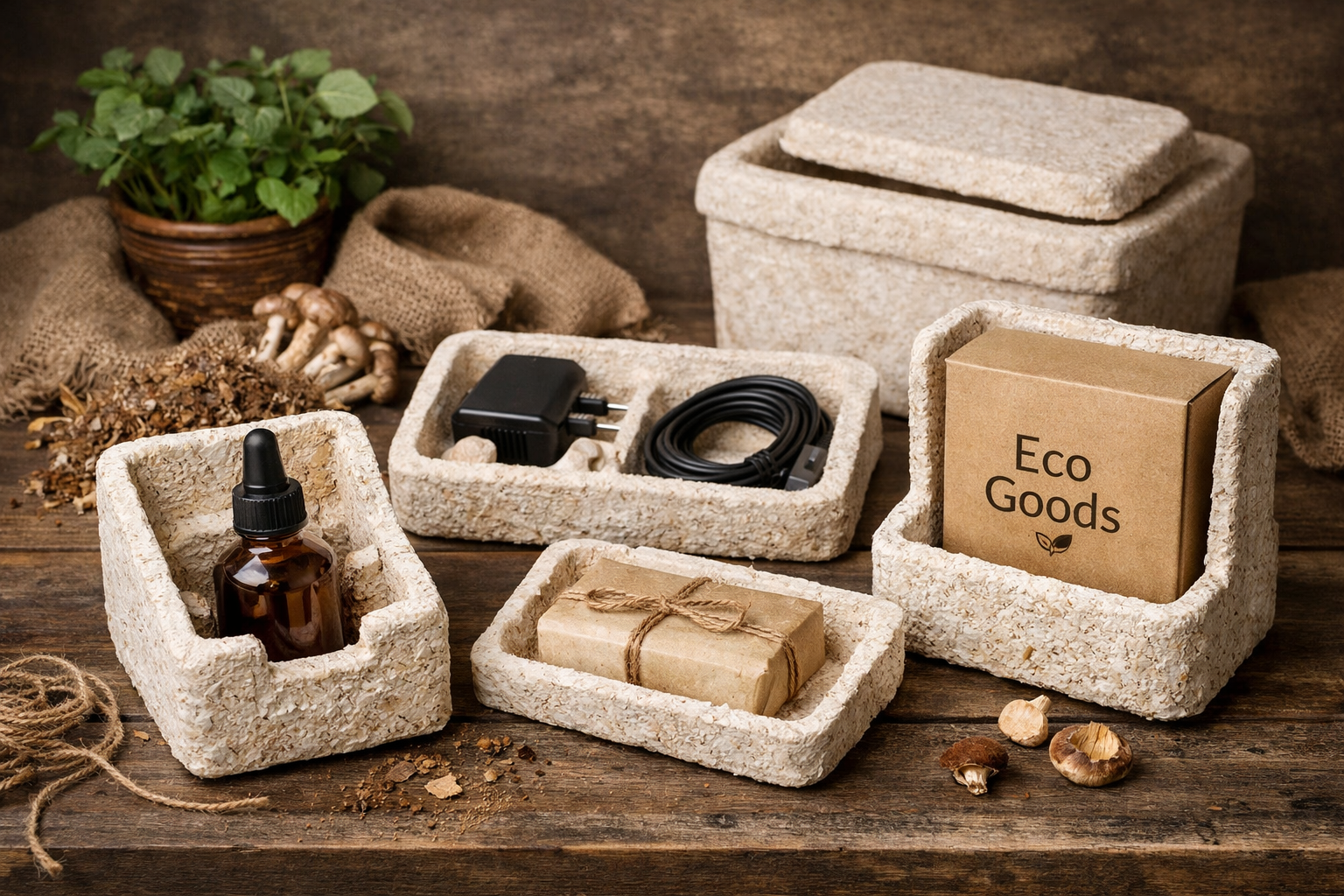
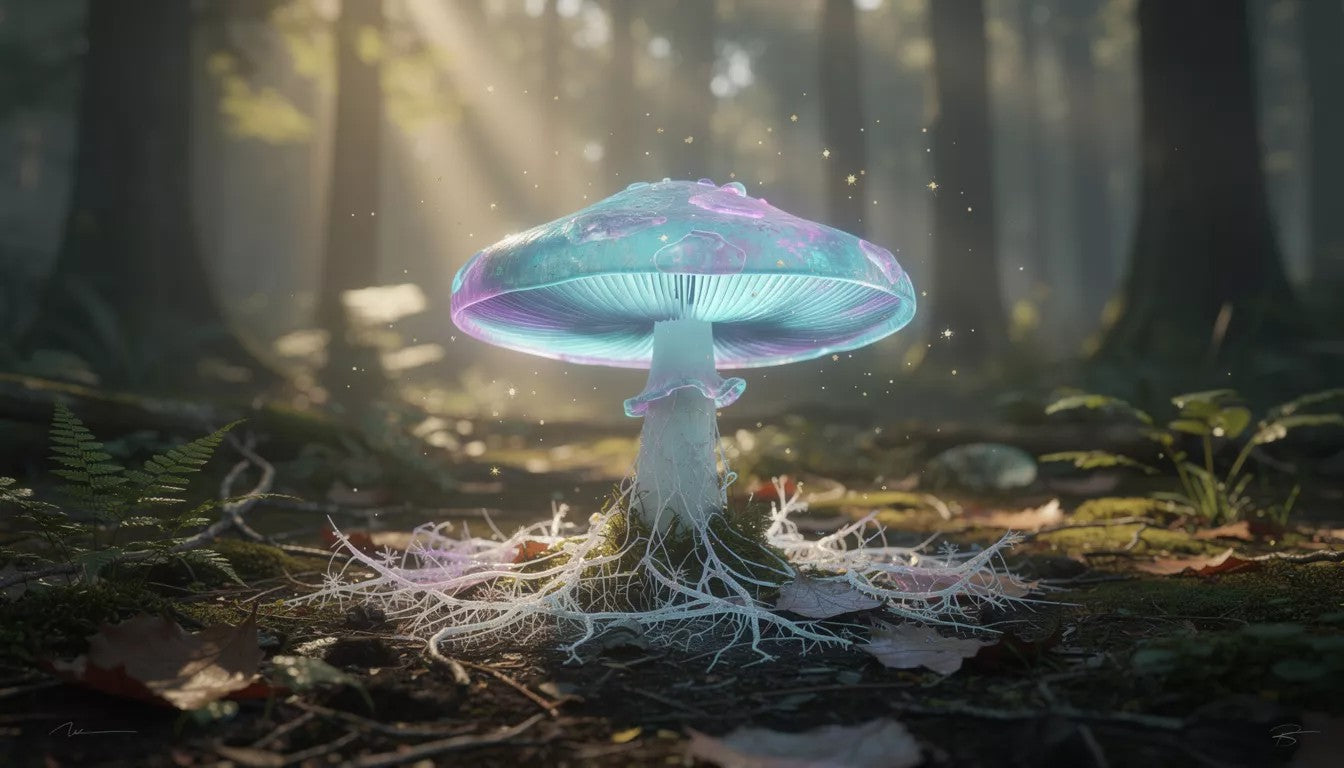
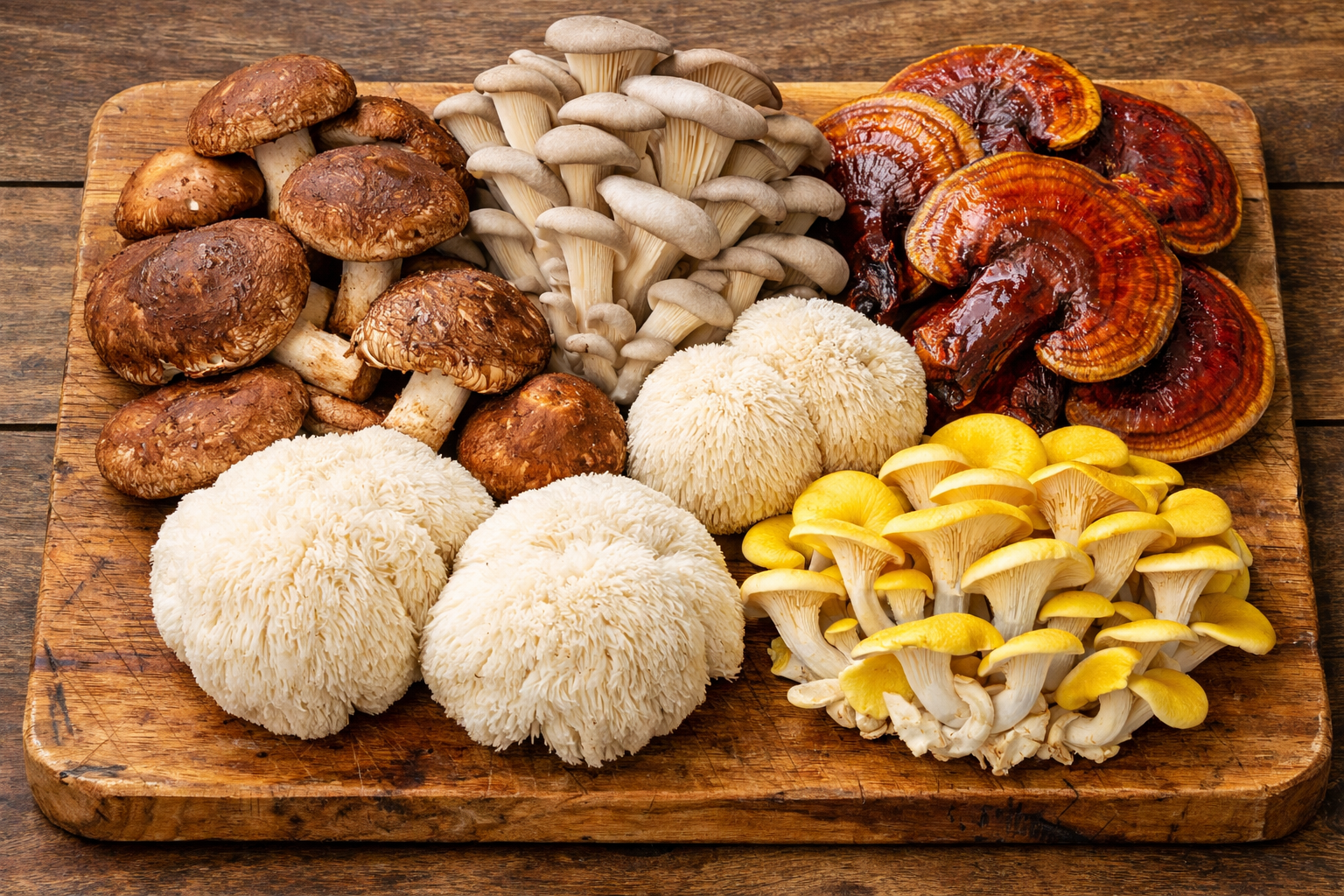
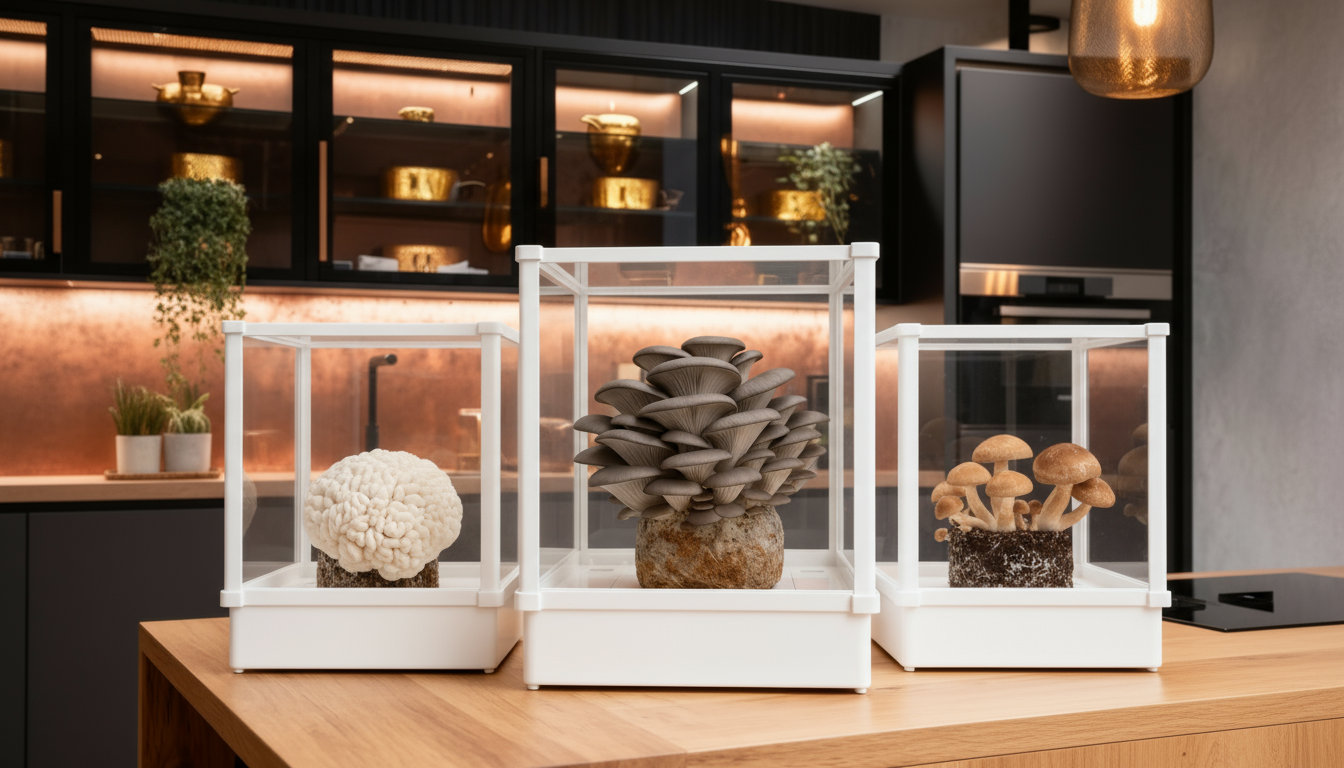
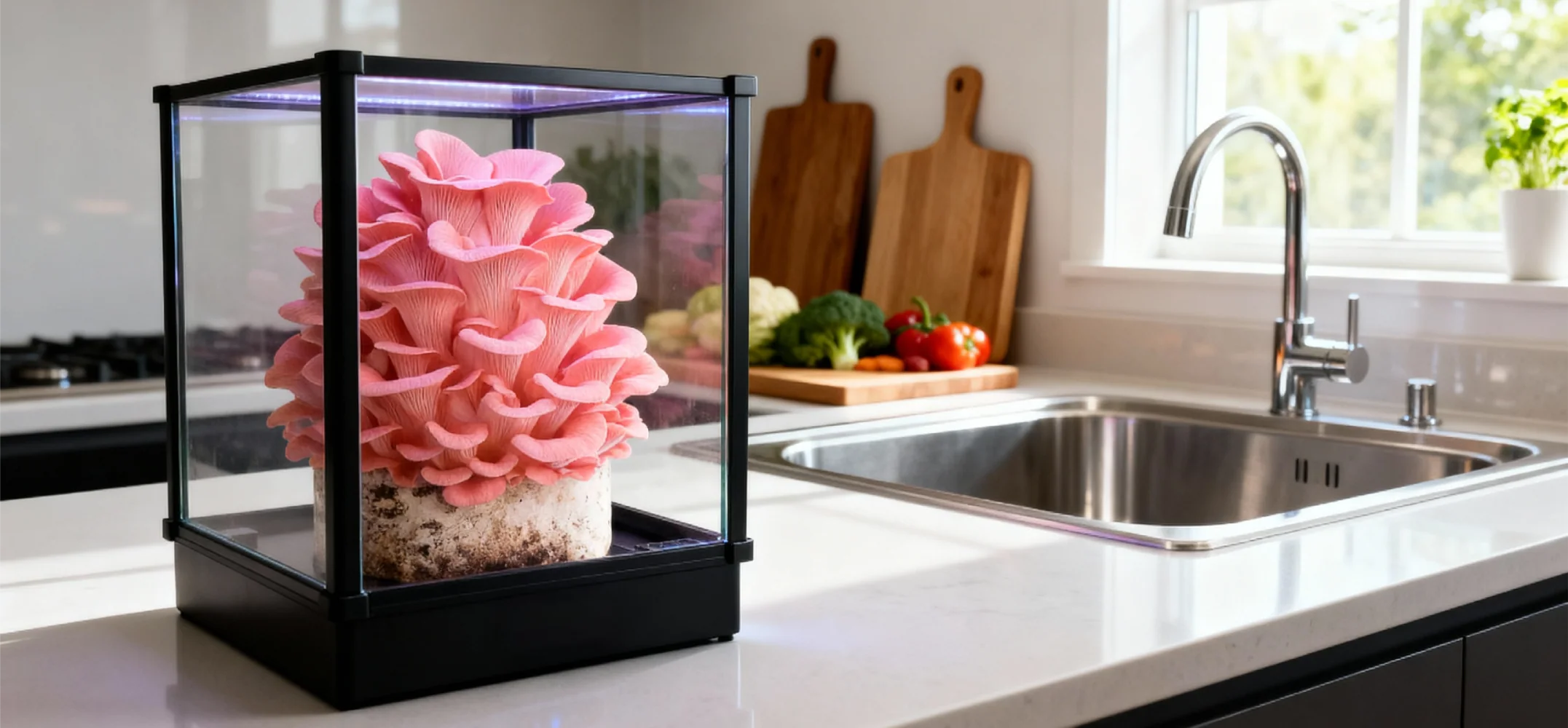
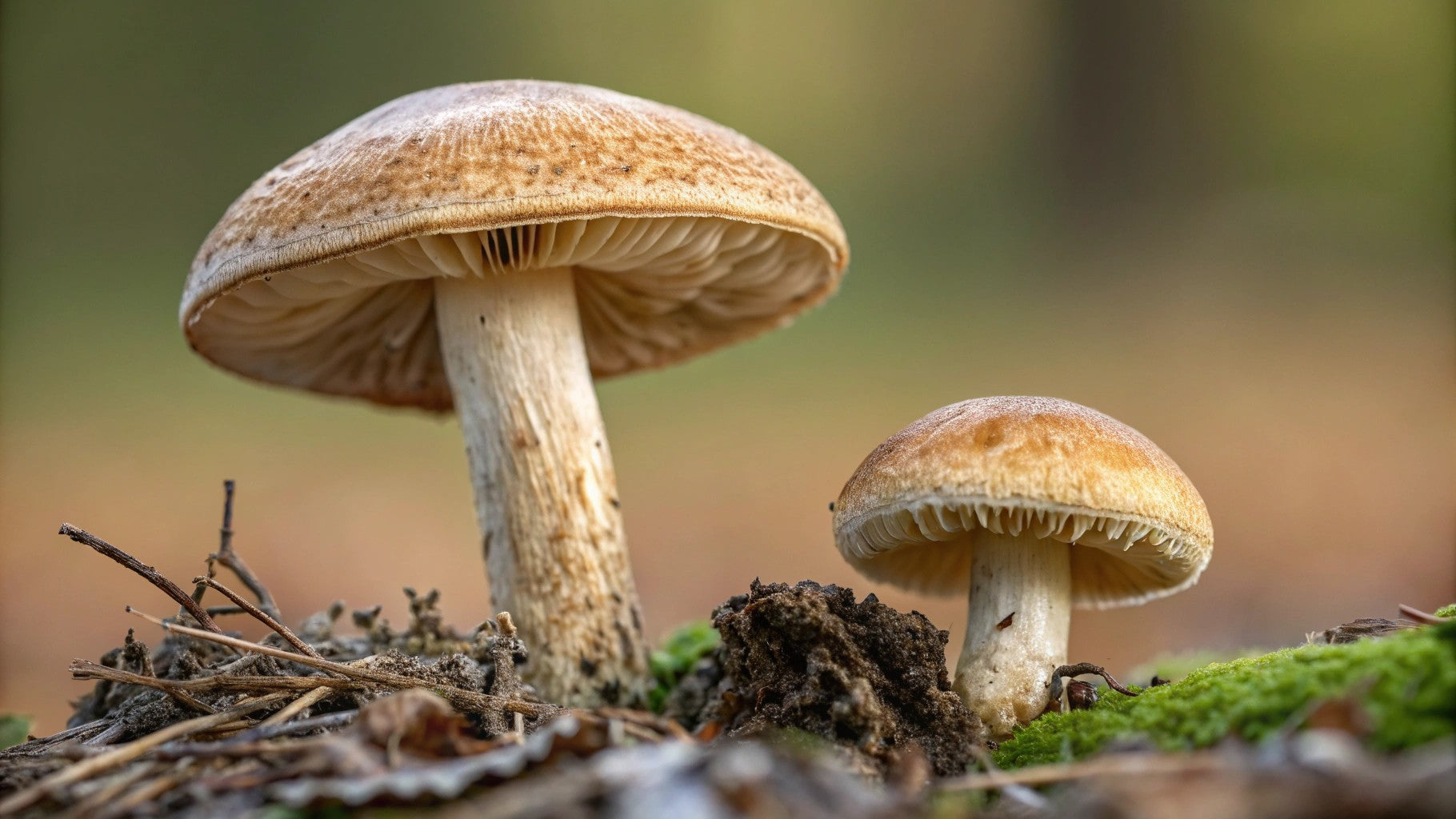
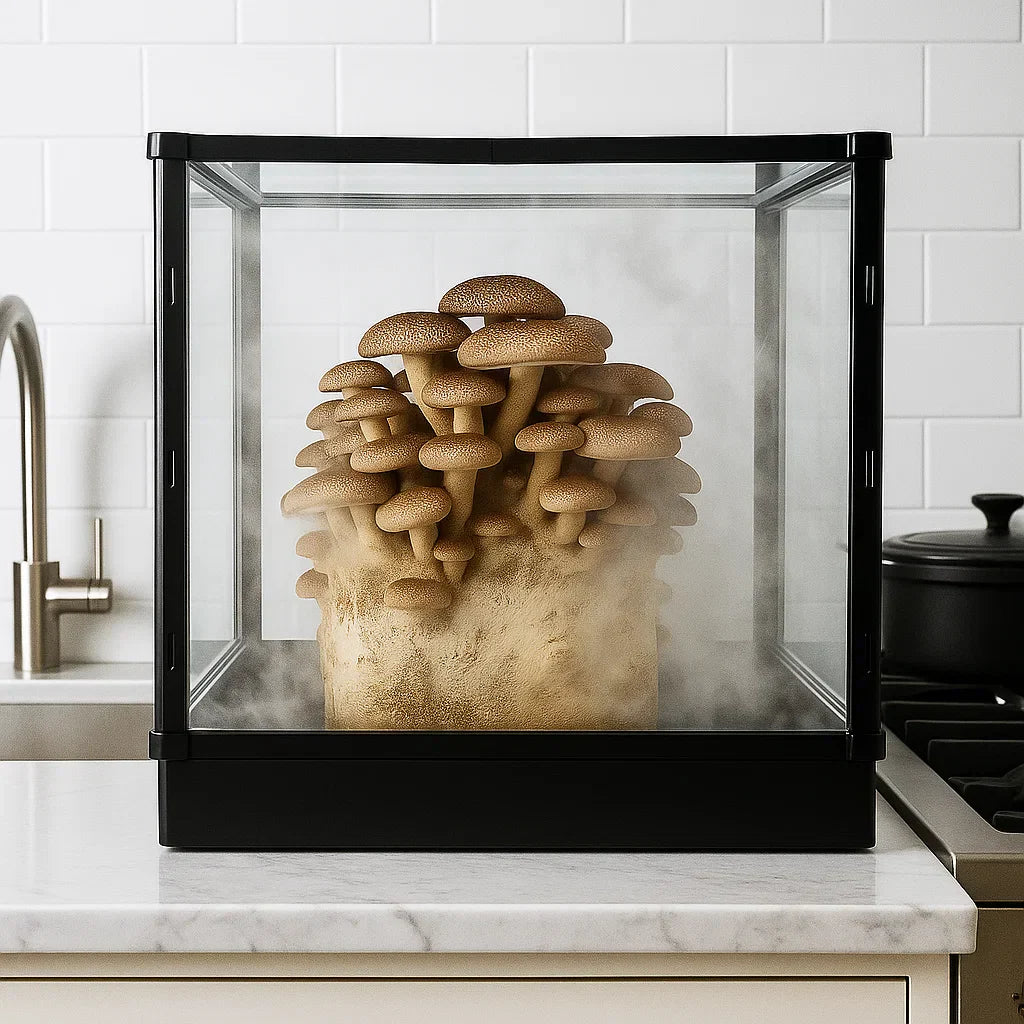
Share:
Oyster Mushroom Recipes: 15 Delicious Ways to Cook These Versatile Fungi
Beginner's Guide to Growing Mushrooms at Home with a Smart Kit: From Setup to Harvest